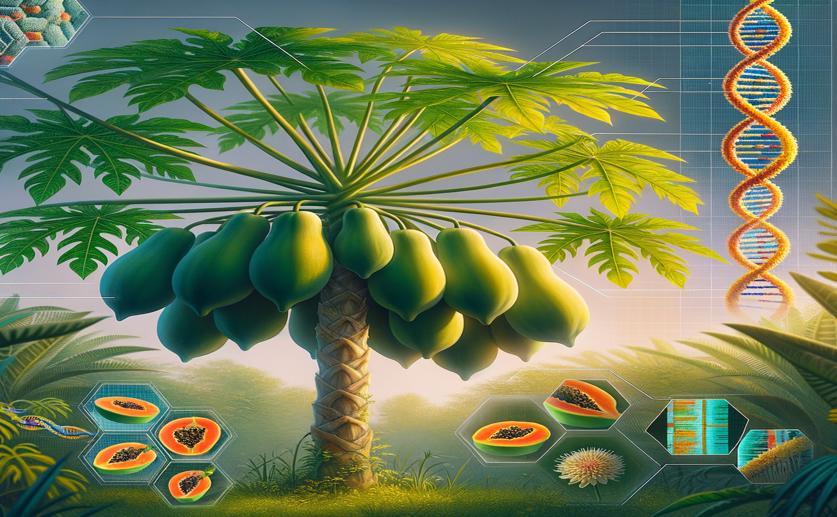
New Virus Found in Papayas: Genome Sequence and Family Tree Analysis
Jim Crocker
21st June, 2024

Image Source: Natural Science News, 2024
Key Findings
- Researchers in Ecuador discovered a new virus, named "papaya sticky fruit-associated virus" (PSFaV), affecting papaya crops
- PSFaV is genetically similar to other known viruses, suggesting it shares a recent evolutionary ancestor with them
- Understanding PSFaV's genetic makeup helps develop tools for early detection and management of papaya sticky disease (PSD)
References
Main Study
1) Complete genome sequence and phylogenetic analysis of a newly discovered fusagra-like virus infecting Carica papaya in Ecuador.
Published 20th June, 2024
https://doi.org/10.1007/s00705-024-06075-7
Related Studies
2) Battle of Three: The Curious Case of Papaya Sticky Disease.
3) A Capsid Protein Fragment of a Fusagra-like Virus Found in Carica papaya Latex Interacts with the 50S Ribosomal Protein L17.
4) The dsRNA Virus Papaya Meleira Virus and an ssRNA Virus Are Associated with Papaya Sticky Disease.
5) Two Novel Relative Double-Stranded RNA Mycoviruses Infecting Fusarium poae Strain SX63.



 20th June, 2024 | Greg Howard
20th June, 2024 | Greg Howard